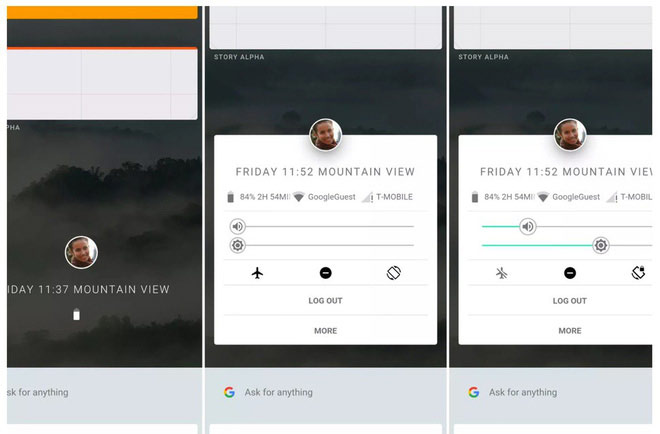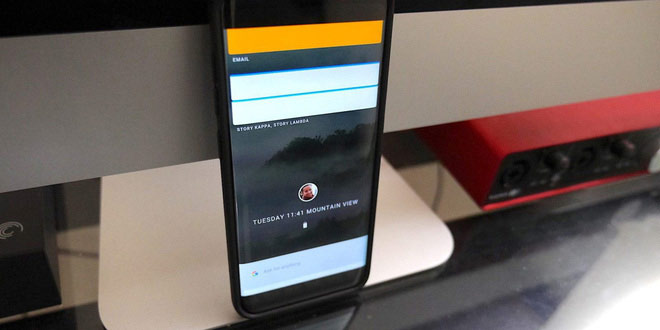All the interesting information about Fuchsia, Google's new operating system
It has been more than a year since Google announced it is developing a new operating system code-named Fuchisia, but until now, we still don't know what Fuchsia OS will be used for, for which device. Find out about Google's Fuchsia OS project through the synthesis of the information we have known in the article below.

What is Fuchsia OS?
Fuchsia is a code block that is said to be the beginning of a completely new operating system, currently stored on Google's source code repository and GitHub. Google has not yet confirmed the new operating system.
Unlike Android OS and Chrome O, this new operating system is not based on the Linux kernel but is built on Zircon (formerly Magenta) - a new kernel created by Google itself.
How does the new operating system look like?
Currently, Fuchsia has an initial user interface named Armadillo, built with Google's Flutter SDK - which is used to create cross-platform scripts that can run on many different operating systems. . You can see the interface of Fuchsia in the video below.
Armadillo is designed and divided into multiple cards, can be drag and drop for use in tabbed mode (like Chrome) or split screen. In addition, these tags seem to offer similar suggestions to Google Now.
What is the purpose of Fuchsia OS?
Since 2015, many people believe that the new operating system Fuchsia OS was created to unite Chrome OS and Android OS into a single operating system and will be released in 2017. But this hasn't happened.
According to Google documents, the new software is designed to target modern phones and personal computers with fast processing chips and ample RAM.
Fuchsia is based on Zircon - a medium-sized microkernel derived from the LittleKernel project for embedded systems, user-mode support, graphical rendering and "capability-based security". On Fuchsia's GitHub site, two named developers are well known experts in the field of embedded systems.
All of these indicate that Fuchsia will be an operating system for Wi-Fi-connected devices. But before that, Google launched an IoT platform called Android Things, so this hypothesis doesn't seem right.

After Armadillo's System UI compilation, the ArsTechnica website discovered that Fuchsia was created to target the operating system for smartphones or tablets. Perhaps the specific purpose for Fuchsia OS has been set by Google for a long time but they have not yet revealed it.
Does Fuchsia replace Android
This can certainly happen. The reason is that Google has not been able to solve many complex problems of Android today. Specifically:
- Android's strong fragmentation is caused by "disruptive" producers and installs it on hundreds of different devices from dozens of different manufacturers or modified Android versions far from the original.
- The annual updates for Google Android take about 4 years to fully cover the entire Android ecosystem.
- Android is based on Linux, which is limited by many legal copyright issues. Linux itself is not designed for smartphones or IoT devices, so when being edited and uploaded to devices creates an environment full of bugs and security holes.
Obviously a new operating system and platform will solve all the problems mentioned above.

Other theories about Fuchsia OS
Fuchsia OS is the successor to Andromeda, an integrated operating system between Android and Chrome OS but has long been dead.
Hacker News reported that Fuchsia could be used for augmented reality interfaces.
There are not any other clues about this new operating system on Fuchsia's GitHub site, which is a very confusing line: Pink + Purple == Fuchsia.
Why is Fuchsia OS's source code in public mode?
According to Brian Swetland, one of the Fuchsia developers, from the very beginning when building Fuchsia OS was decided that the source code to open it in public mode is a matter of course.
Which device can run Fuchsia OS?
On GitHub there is a list of devices that can run Fuchsia OS. Currently, Fuchsia OS has been able to boot on some small PCs running Intel chips and on laptop Acer Switch Alpha 12.
What do I need to install Fuchsia?
To install Fuchsia on a device, we need it 2 computers: 1 server (host) and 1 target machine (target).
In addition, developer mode on Chrome OS must also turn on to boot USB. The file installed on the USB will be canceled as soon as you have installed it!
Recently, Google tested Fuchsia OS on Pixelbook, a device with links to Intel and Chromebook micro-embedded systems and PCs, related installation instructions were also published making the community Very excited network.
- Google tested the new operating system Fuchsia OS on Pixelbook
- Get the free Lisa OS source code - Apple's first operating system
- Google released Android Oreo Go for low-profile smartphones
You should read it
- How to Care for Fuchsia
- How to Care for Fuschia
- Google's new tool allows developers to code applications simultaneously on all platforms, including iOS
- Experience fast Google Pixelbook Go: Simple, light, smooth typing, price to consider
- Pixelbook Go - Cheap Chromebook Laptop running Chrome OS, weighing 900g, 12-hour battery, priced from $ 649
- Chrome OS will support running Linux applications
 It is possible to turn iPhone lock into an international version with only one piece of code, and this is a way to identify to avoid being tricked when buying an old iPhone
It is possible to turn iPhone lock into an international version with only one piece of code, and this is a way to identify to avoid being tricked when buying an old iPhone Is the girl hit by lightning when she is on the phone, is it safe to use the phone when there is thunder?
Is the girl hit by lightning when she is on the phone, is it safe to use the phone when there is thunder? Sony announces today's highest resolution image sensor for smartphones
Sony announces today's highest resolution image sensor for smartphones Which smartphone is the heaviest in the mobile market today?
Which smartphone is the heaviest in the mobile market today? 12 high-end Android smartphone batteries launched in the first half of 2018 and the unexpected ending
12 high-end Android smartphone batteries launched in the first half of 2018 and the unexpected ending Top 10 iOS apps are rated the App Store in the past decade
Top 10 iOS apps are rated the App Store in the past decade